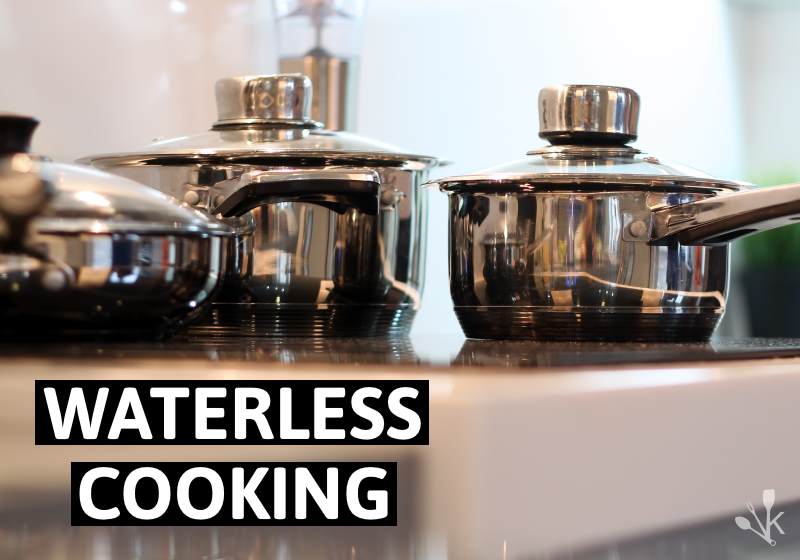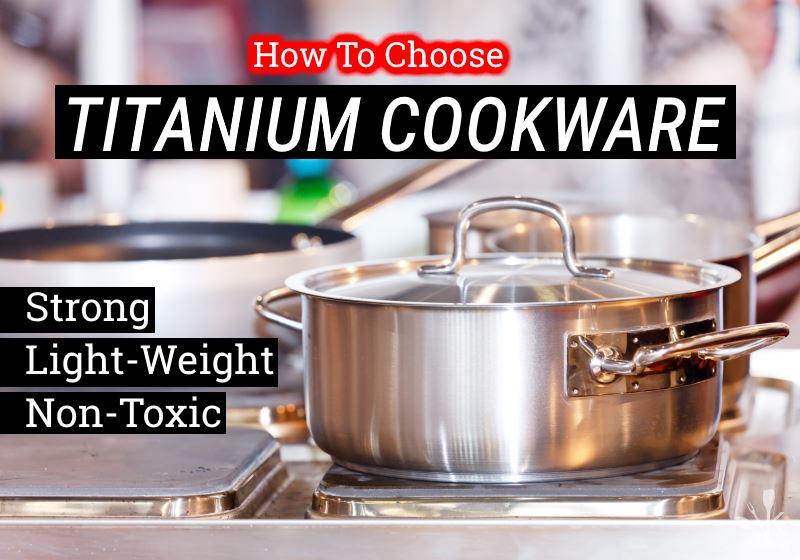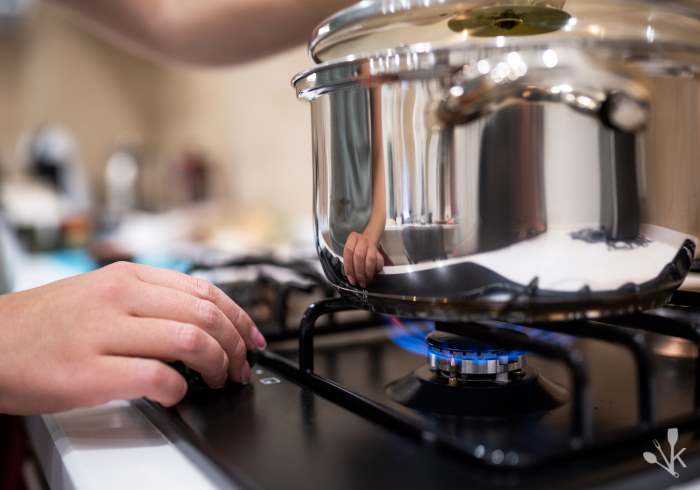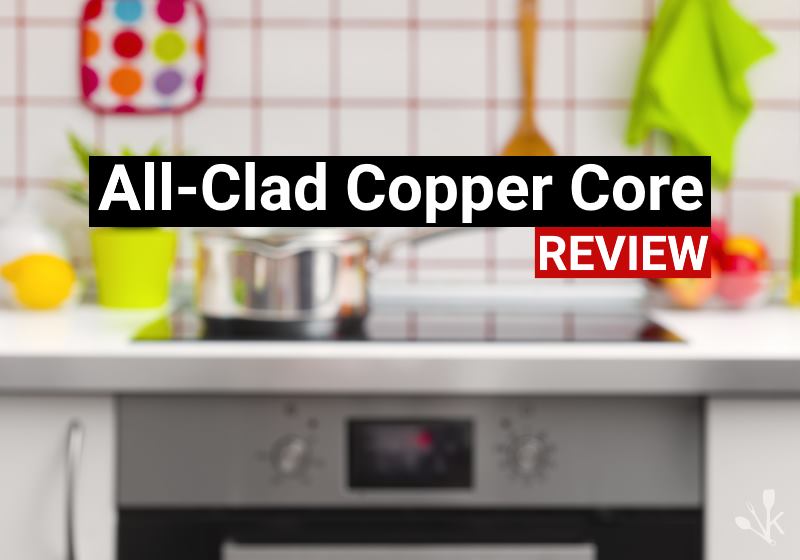If getting healthy were easy, everybody would be doing it. It may simply be too hard to fit the gym into your schedule when you don’t already have a routine established.
At the very least, we can try to eat a little healthier with help from a thing called waterless cookware.

What Is Waterless Cookware?
Simply put, it’s cookware that enables you to cook without water or oil.
The main reason we cook with oil or water is to ensure even heat distribution and prevent food sticking to pans.
Waterless cookware is designed with different layers of metals, tight-fitting lids, and steam control valves, all of which make it possible to cook food evenly and prevent any sticking without additional water or oil.
Most examples of waterless cookware have a stainless steel cooking surface with internal layers of aluminum, copper, and/or iron. This unique, airtight design retains heat and creates steam from the ingredients’ already-existing moisture content.
Benefits Of Waterless Cooking
Healthier
Cooking with a lot of water can deplete the food of any water-soluble nutrients, such as enzymes, vitamin C, and folate. The same goes for cooking oil, which can introduce a lot of fat to a dish and negate its nutritional value.
Waterless cookware allows us to keep those vitamins and minerals in our food while keeping out any extra fat and calories.
Safer
Everyday metal pots and pans made from aluminum or copper can contaminate your food with trace amounts of metal, especially when high amounts of heat are used.
Pans with nonstick coating can also introduce toxic chemicals to your food or to the air through smoke.
The last place we want toxic elements is in our family’s food. While contaminants are all around us, waterless cooking can give us more control over what we put in our bodies.
The outer, cooking surface of waterless cookware is made from surgical stainless steel, protecting your food from the aluminum and copper layers within.
More Energy Efficient
Waterless cookware is designed to absorb and retain heat, and they’ll continue cooking even when the stove is turned off.
Most of the magic happens as steam gets trapped inside, surrounding the food and effectively cooking it.
Only a small amount of heat is needed, so waterless cookware uses less energy overall when compared to traditional cooking methods.
Better Tasting, Better Looking Food
Finally, is there anything more boring than a plate of bland, boiled vegetables? Waterless cookware keeps food vibrant and aromatic, making healthy meals even more appealing.
Problems With Waterless Cooking
As beneficial as waterless cooking is, it does come with some downsides. Here are some of the disadvantages of waterless cookware:
- Expensive (a good quality set can cost several hundred dollars)
- Requires monitoring during cooking
- Heavy
- Lid stays locked during cooking
- Not completely waterless
How To Cook With Waterless Cookware
- Prep Ingredients
Keeping in mind that you can’t take the lid off once you start cooking, rinse, peel, or dice ingredients as needed before you put them in the pan.
You can also add a small amount of water at this time if your ingredients don’t already contain a lot of moisture. A few tablespoons or a quarter of an inch in the bottom of the pan is usually enough.
- Set Stove on Medium or Low Heat
Place your waterless cookware on the stove and set the heat on “low” or “medium” setting.
Only a small amount of heat is needed to cook the food, and setting the stove higher than medium will be a waste of energy.
- Place Lid with Valve Open
Place the lid on the pot with the steam control valve in the “open” position. You may see a small amount of steam escaping through the valve as the cooking process starts inside.
- Listen for the Whistle
As more steam escapes from the steam control valve, your waterless cookware will begin to produce a high-pitched whistling sound. When this happens, it’s time to close the valve and reduce or turn off the heat.
- Wait for It to Finish Cooking
After closing the valve and turning off the stove, wait between 10-30 minutes to complete cooking. The timing will vary depending on what you’re cooking and the level of doneness that you prefer.
- Release the Valve
Once the cooking process is complete, carefully return the steam release valve to the open position, lift up the lid, and take a look at your next healthy meal.
In Summary
Diet and exercise are both important in maintaining good health, but science has shown time and time again that 90% of the effort comes from making healthy food choices.
Waterless cookware may be expensive, but a single set can help your family with healthy, homemade meals for years to come.











